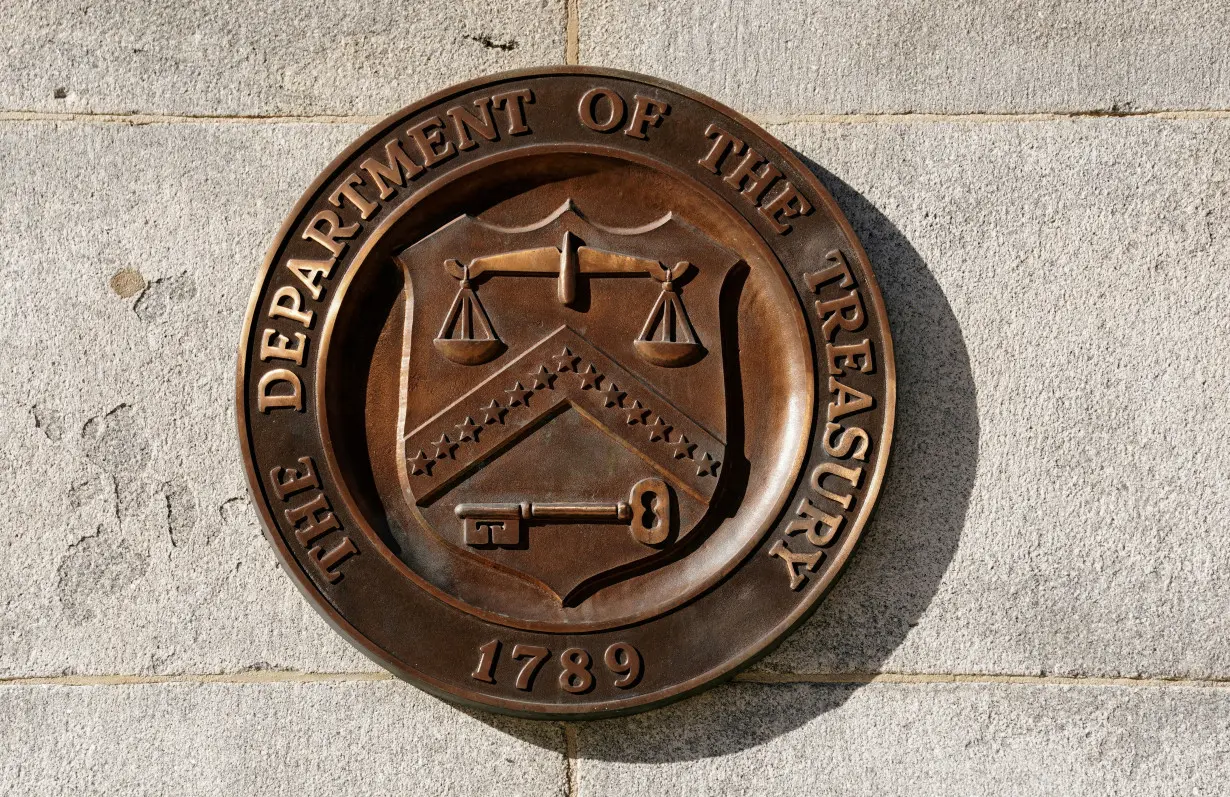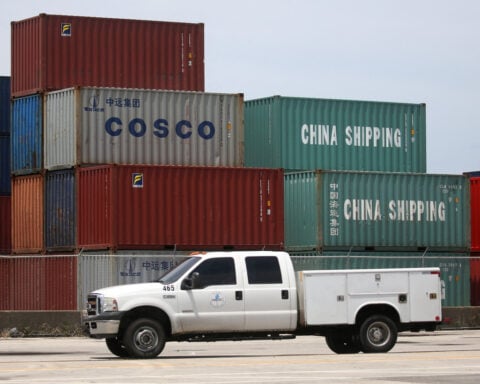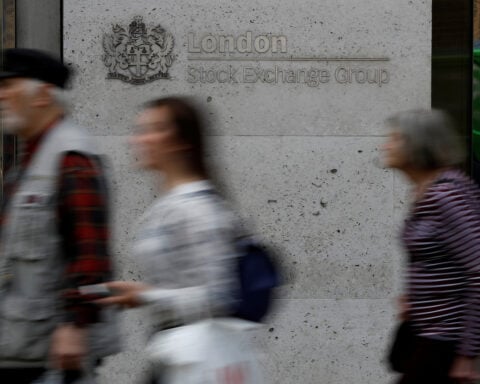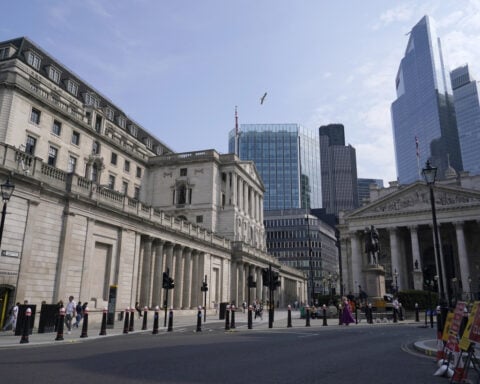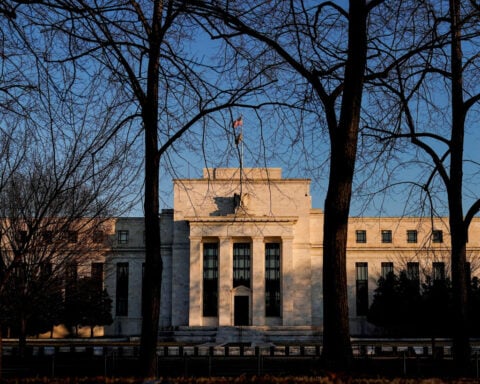By Jamie McGeever
ORLANDO, Florida (Reuters) - The recent surge in long-dated U.S. bond yields to their highest since 2007 has a few plausible triggers, but the Fed's quantitative tightening (QT) policy of reducing its balance sheet does not appear to be one of them.
If anything, shifts in the composition of the central bank's holdings of Treasury bonds since 'QT 2' was launched in June last year may actually be keeping longer-term borrowing costs from spiking even higher.
While the Fed has reduced its holdings of Treasury bonds and bills by around $840 billion in that time, its stash of bonds with a maturity of 10 years or more has actually grown, both in nominal terms and as a share of total holdings.
Indeed, it is now a record high by both measures - $1.5 trillion in nominal terms, up around $75 billion since QT 2 started; and 30.5% of all the Fed's holdings of bills and bonds, up almost 6 percentage points.
Fed holdings of Treasury-issued debt of all other maturity segments - bills, one-to-five years, and five-to-10 years - have declined to varying degrees, nominally and as a share of the total, particularly the one-to-five year part of the curve.
If the Fed's holdings of long-dated securities were shrinking like other parts of the curve, or even at all, more of these bonds would be available to the wider market. All things equal, these yields would probably be higher.
"It's at least reasonable and fair to raise the argument that the backup in long-dated yields doesn't owe to QT dynamics," said Benson Durham, head of global policy and asset allocation at Piper Sandler.
Curiously, the Fed's holdings of longer-dated bonds as a share of the total also rose during 'QT 1' between October 2017 and July 2019, although the nominal value held pretty steady around $620 billion.
Durham is reluctant to put too much weight on QT 2's impact on the broad rise in yields, given that the program has been so well-flagged and the monthly caps have been in place for over a year. Well before the current volatility.
But Joseph Wang, chief investment officer at Monetary Macro and a former senior trader on the Fed's open markets desk, believes QT is a factor driving yields higher as it increases the supply of Treasuries the private sector must hold.
Wang recognizes that if the Fed held fewer longer-dated securities these yields might be even higher, but also points out that the Fed's holdings are largely determined by what Treasury issues.
POOR LIQUIDITY?
All told, the Fed's 'QT 2' is almost twice the pace of QT 1. It involves reducing the central bank's balance sheet by as much as $95 billion a month - up to $60 billion of Treasury debt and $35 billion of mortgage-backed securities.
The Fed has not sold a single bond back to the market and is still reinvesting the proceeds of some maturing paper into new debt of similar maturities. But it allows some securities to mature without reinvesting, which reduces its holdings.
Since the Fed started QT 2, its total holdings of Treasury bills and bonds have fallen to $4.93 trillion from $5.77 trillion. More than half of that $840 billion decline, almost $500 billion, has been in one-five year securities.
This may be more mechanical than anything else, driven by Treasury issuance. Also, a two-year bond falls out of the one-five year maturity bucket quicker than 20-year and 30-year bonds fall out of the 10-year and longer maturity segment.
The average profile of Fed-held Treasury debt is longer than total outstanding Treasury debt, and getting longer. If current trends continue, the Fed's largest holding of Treasuries will be 10-30 year maturities by the middle of next year.
Heavy selling at the long end of the curve in recent months has propelled yields higher and steepened the yield curve, developments which could spell bad news for the economy.
IMF chief economist Pierre-Olivier Gourinchas said on Tuesday that the spike in long-term borrowing costs was "a little bit odd," while Minneapolis Fed President Neel Kashkari said it is a bit "perplexing."
Some point to growing fiscal concerns, with the government budget deficit potentially approaching the $2 trillion mark. Some point to the 'term premium' - the somewhat nebulous level of compensation investors demand for taking on the extra risk of holding longer-dated securities rather than regularly rolling over shorter-term bonds.
Whatever is driving yields higher, trades are clearing and there is no obvious sign of stress or liquidity air pockets. So far, at least, the market is functioning smoothly.
"It has been a relatively orderly move, but it is getting more volatile. And price volatility is synonymous with poor liquidity," Wang warns.
(The opinions expressed here are those of the author, a columnist for Reuters.)
(By Jamie McGeever; Editing by Andrea Ricci)

 UK inflation unexpectedly eases in December, which could reduce pressure in bond markets
UK inflation unexpectedly eases in December, which could reduce pressure in bond markets
 Body count from South African mine siege rises to 60
Body count from South African mine siege rises to 60
 US importers rush in goods from China as Trump tariff threat looms
US importers rush in goods from China as Trump tariff threat looms
 Novak Djokovic breaks a tie with Roger Federer for the most Grand Slam matches in tennis history
Novak Djokovic breaks a tie with Roger Federer for the most Grand Slam matches in tennis history
 China's RedNote: what you need to know about the app TikTok users are flocking to
China's RedNote: what you need to know about the app TikTok users are flocking to
 British author Neil Gaiman denies ever engaging in non-consensual sex as more accusers come forward
British author Neil Gaiman denies ever engaging in non-consensual sex as more accusers come forward
